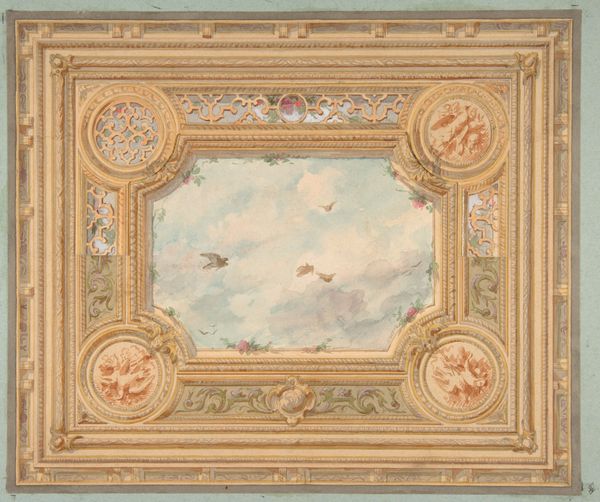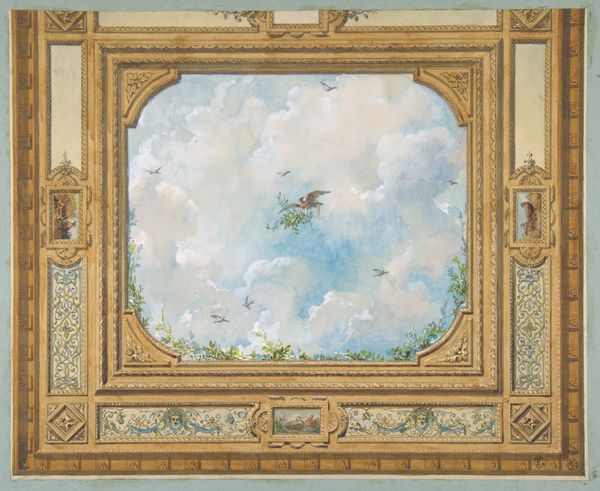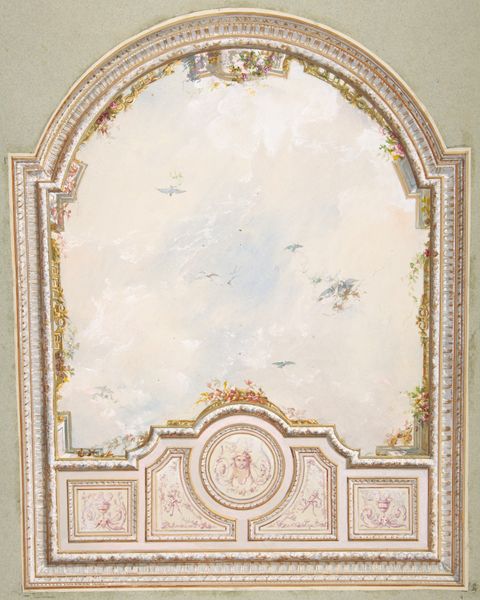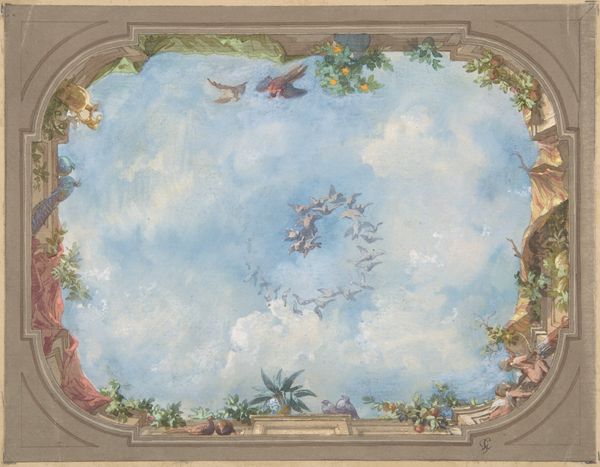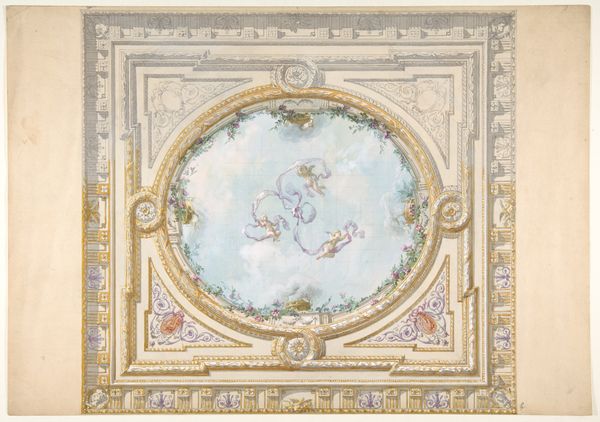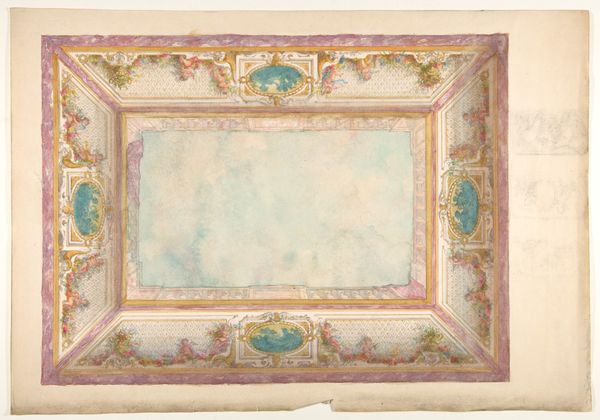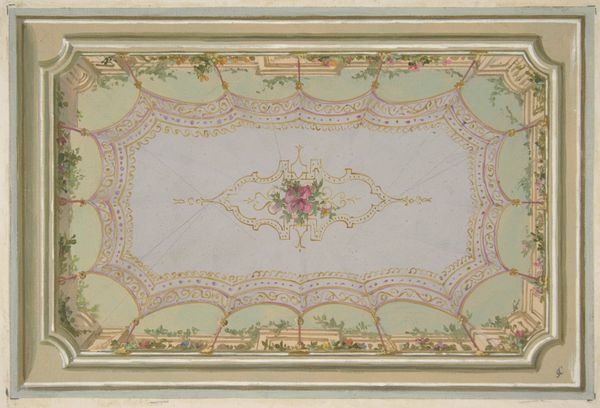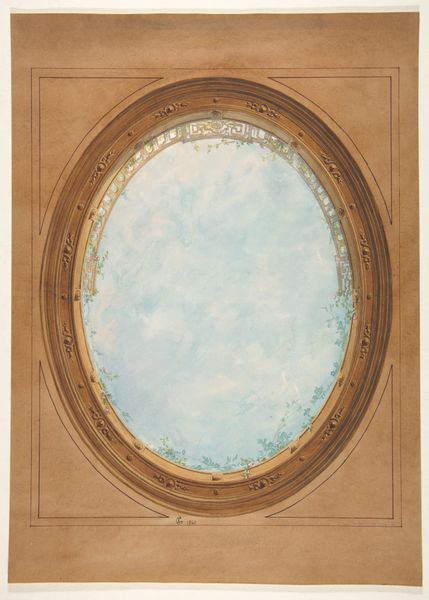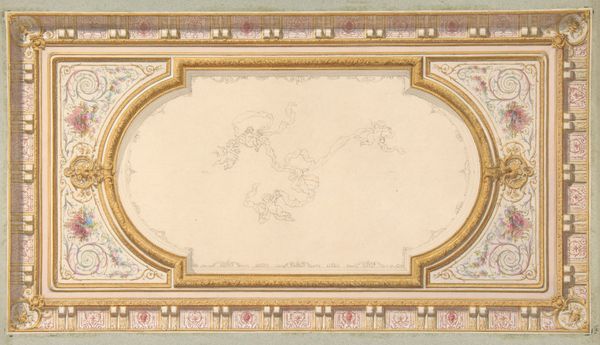
Design for a ceiling with trompe l'oeil sky 1850 - 1900
0:00
0:00
Dimensions: Overall: 13 1/4 x 19 7/16 in. (33.6 x 49.3 cm)
Copyright: Public Domain
Curator: This watercolor and print design, titled "Design for a ceiling with trompe l'oeil sky," created sometime between 1850 and 1900, is a study in aspiration. Its artist, Jules-Edmond-Charles Lachaise, sets the scene for grand illusion. Editor: It’s such a dreamlike escape! That central panel of airy sky makes the ornate framework almost disappear. You could lose yourself in that illusion. Curator: The 'Trompe l'oeil', or fool the eye effect, really speaks to the 19th-century fascination with realism, especially among the elite, using artifice to suggest boundless space. This aesthetic choice of seemingly limitless skies can be tied to themes of control and desire within enclosed, gendered, spaces. How does a space like this allow people, specifically women in domestic sphere, to participate or be excluded in terms of their identities? Editor: You're right, there’s that interesting tension, of the rococo meeting something classical and new in landscape... What strikes me, however, is the recurrence of bird motifs. It's a common symbol, right, for the soul, for freedom, perhaps even aspirations towards enlightenment. This motif recurs across centuries and continents, often indicating hope beyond terrestrial bounds. The frame then functions as both containing, but also directing us. Curator: The frame, with its pastels and embellishments, is not just decorative, but a commentary on the boundaries between constructed reality and perceived reality. The artist utilizes the classical language of art to define how that "sky" is intended to be consumed by viewers on a socio-political level, influencing identity formation and performativity of social structures within its historical moment. Editor: Yes, and to be clear, this symbolic usage predates these social and artistic movements, these avian figures are archetypes present in so many cosmologies. We keep coming back to that—how do visual symbols act as continuity between eras? What persistent need does a certain arrangement of sky and birds and flowering vines fill for human psyches? It really highlights, here in the Metropolitan Museum of Art, this cross temporal phenomenon. Curator: Definitely, analyzing this piece helps us appreciate the complex interplay between artistry, perception, and how societal constructs shape what we value—in that time, but also reflected today. Editor: And for me, it reiterates the enduring appeal of symbols— how they echo across cultures and psychology, giving us a thread of shared visual language in a changing world.
Comments
No comments
Be the first to comment and join the conversation on the ultimate creative platform.
